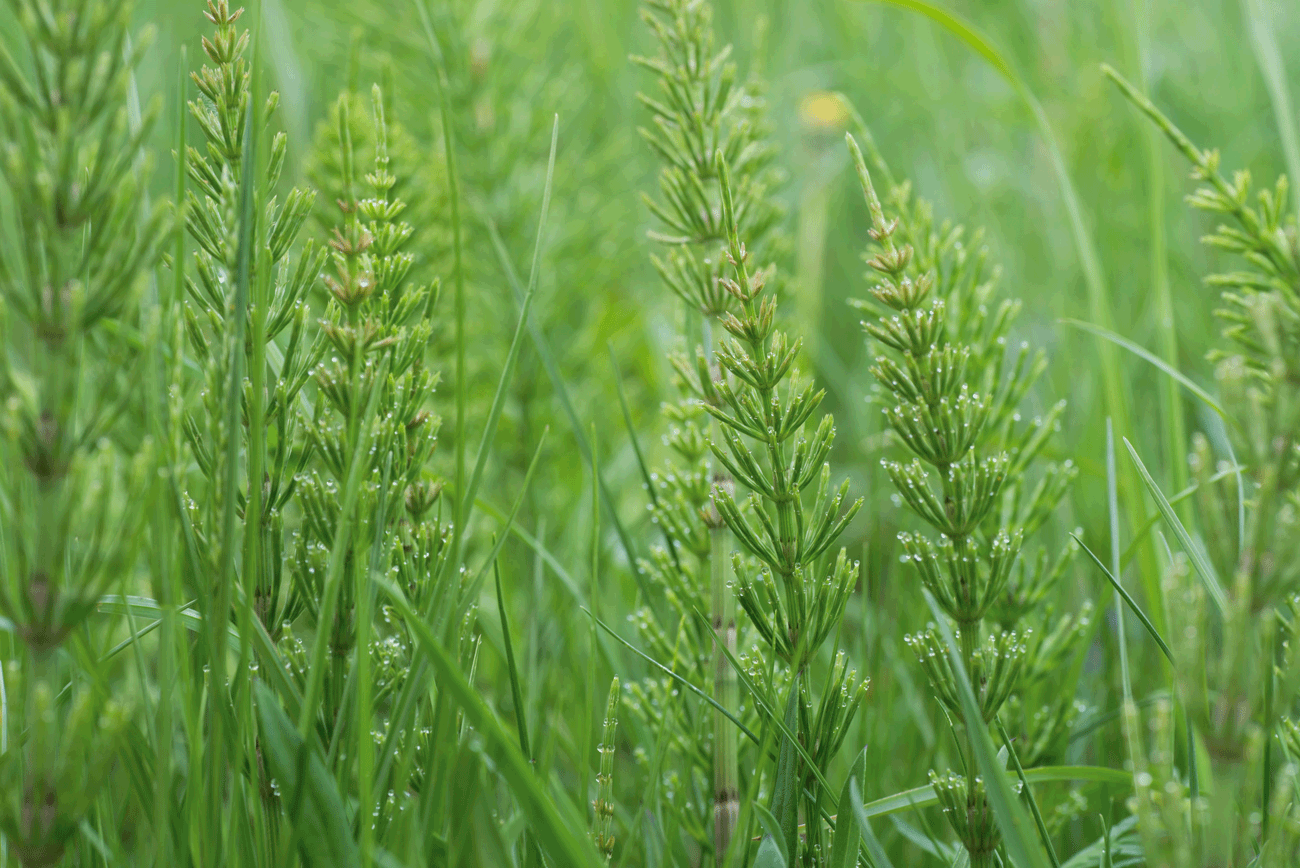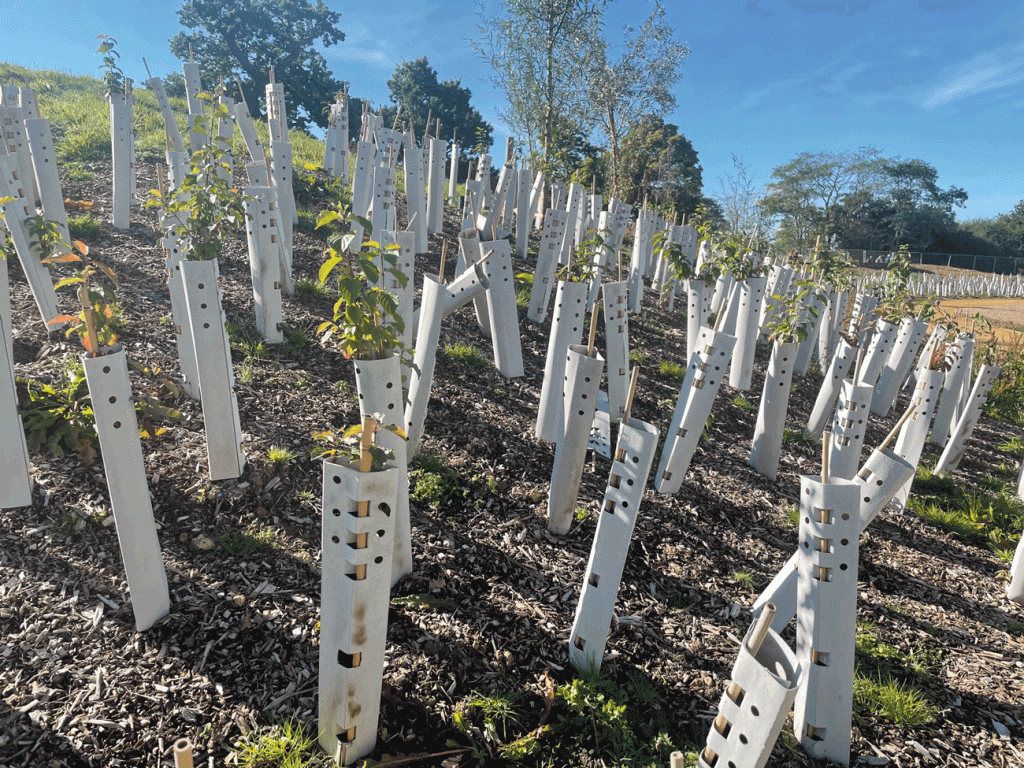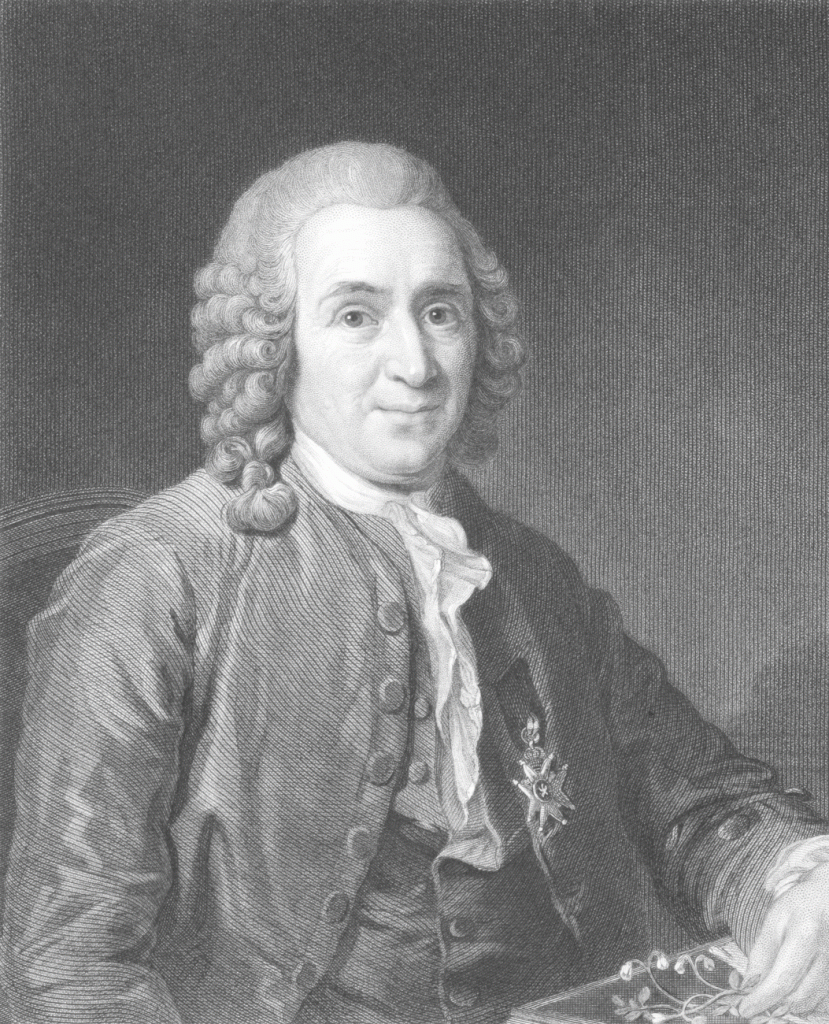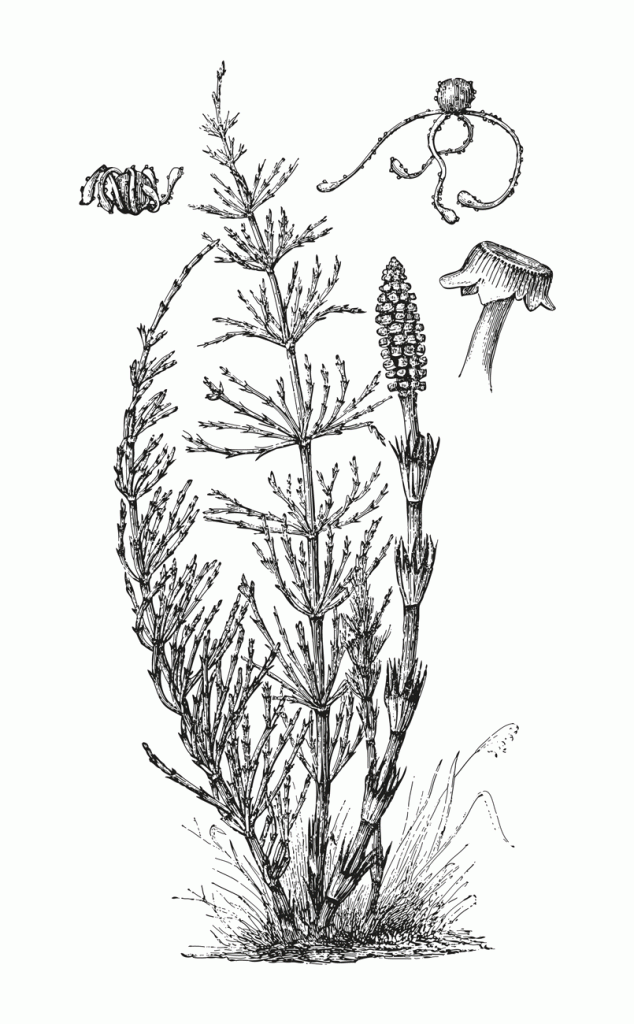
By a carpark in Rudgwick there was a luxurious froth of horsetails. They had recovered well from the drought months – but no surprise, they are survivors. They belong to a class of plants – the Equisetaceae – which have no direct affinity with any other group of British plants and their nearest relatives are the ferns. This order of plants flourished and grew huge in the Carboniferous period – fossils of their gigantic stems are common. The Caboniferous epoch spanned 60 million years – roughly 359 million years ago. In the next epoch, the Permian, there was a major extinction and perhaps 90% of life forms disappeared. Not the horsetail, although the survivors dwarfish representatives.
Until Linneaus (1707-1778) and his binominal classification system which brought order to the study of the natural world there was a Babel of confusion about WHAT exactly was being referred to. Horsetails, for example, were also known as shave-grass, bottle-brush, paddock-pipes, Dutch rushes, bristlewort and pewterwort. They all belong to a single genus, the Equisetum – and the name comes from Latin: equus/horse and seta/bristle. The name has descriptive power and can be understood internationally. What would Linnaeus make of the news that the Quadram Institute at the University of East Anglia has set up an AI programme to name new discoveries – particularly at the microbial level – with names which appear to be Latin but are fakes. The concept of using nonsense Latin names has alarmed some experts and amused many. The whole point of the binominal system is that it is descriptive e.g. Equisetum avensis – tells you that this is the field horsetail.
The main problem, particularly on the bacterial level where discoveries are being made all the time there is a backlog of 50,000 new discoveries that need naming. This includes a microbe which appears to eat plastic – which is exciting news. In the last few years it has become obvious that the very thing which makes plastic useful; its durability, is also a major flaw. The great tragedy of plastic, once thought of as a wonder material is that goes brittle; fragments, degrades and does not decompose. It is early days yet in the development of large scale use of this bacterium – first discovered in Japan. A mutation in Ideonella sakaiensis appeared to give it the ability to use an enzyme break down polymers usually found in plants but also effective in certain plastics. Early days, though.

The Woodland Trust is an admirable organisation and has done invaluable work preserving old woods and planting new. They have donated hedging plants for our conservation site in Cranleigh. The one problem, as I see it, is that every sapling comes with a plastic guard. When I asked them what we should do with them once we take them off the trees – and we have a shed full – they confirmed that they are not recyclable – and we need to be careful not to let the nasty, brittle bits contaminate the soil. They are working hard to find alternative protection for young trees, which are particularly vulnerable to rabbit damage. They announced in their last magazine that they hope to stop using plastic guards by 2025. Not before time. I was very interested to see that the tree guards being used to protect recent planting at Cranleigh’s new park – Knowle Country Park – are not plastic, but stout cardboard. Despite the very challenging weather this summer, the survival rate of the new planting is encouraging.

Another heartening piece of news comes from Kew biologist Prof Richard Buggs (wonderfully apt name!) who writes that when the Ash dieback fungus from Europe first started killing our ash trees in 2012 it was feared that we would lose 95%. Studies in Surrey now seem to show that younger trees may already be developing increased resistance. It is also hoped that the Government will tighten border controls on imported trees and invest in the UK tree nursery sector. These environmental safeguards have been long promised but so far, no action. This is urgent as two more pests have entered our forests – the spruce bark beetle and the pine processionary moth.
Beryl Harvey Fields is Cranleigh’s nature conservation site. We need volunteers.
For further information: visit our conservation site in Cranleigh – or better, volunteer. Contact Philip Townsend at: townsendp99@gmail.com for details.













